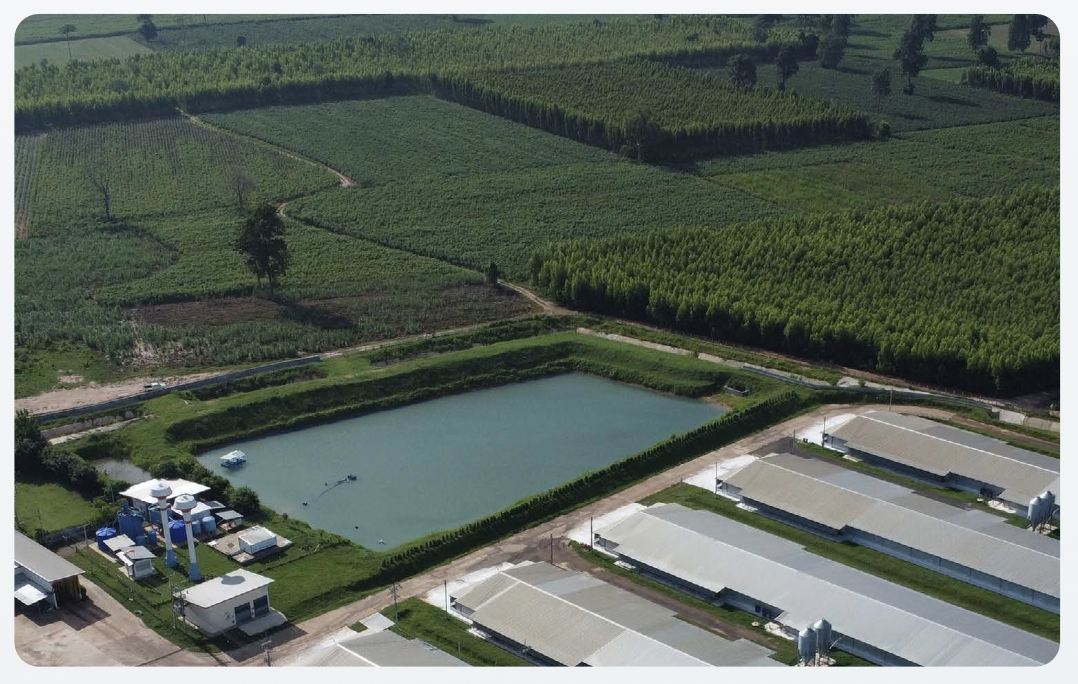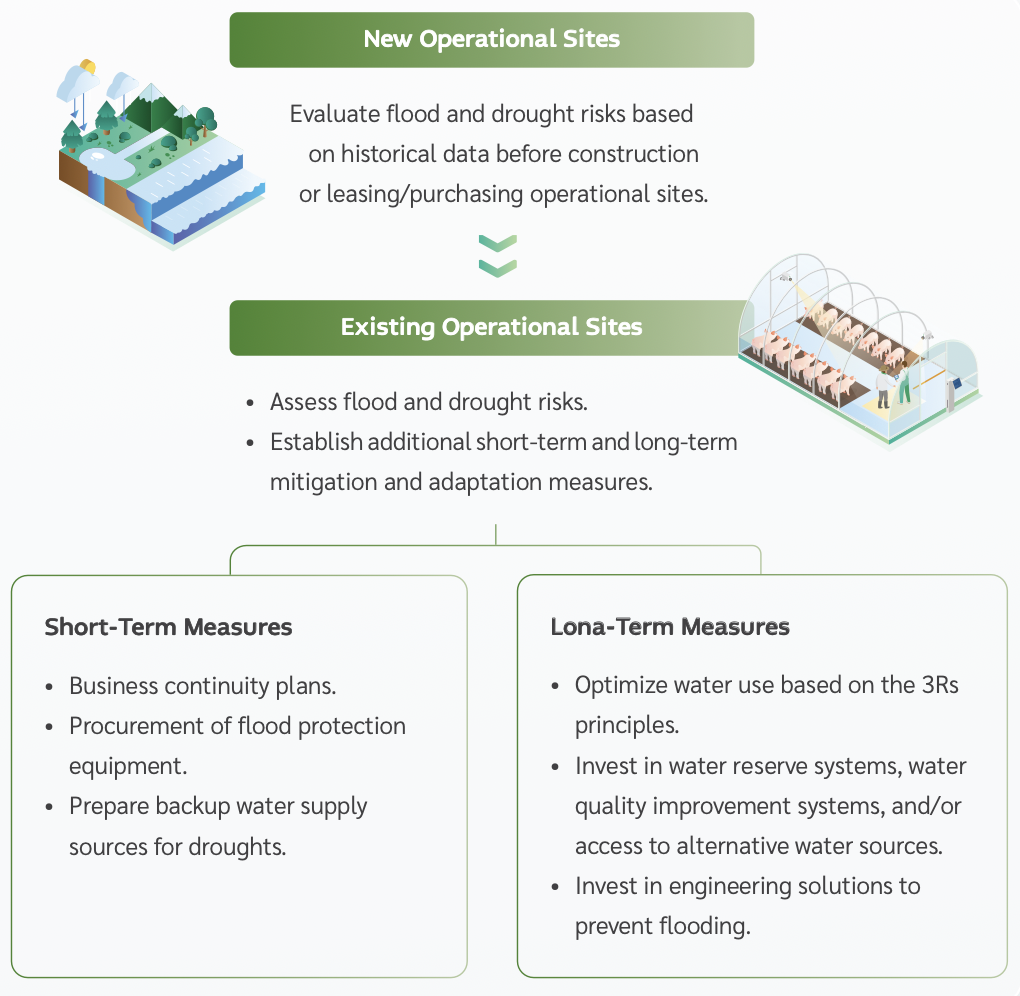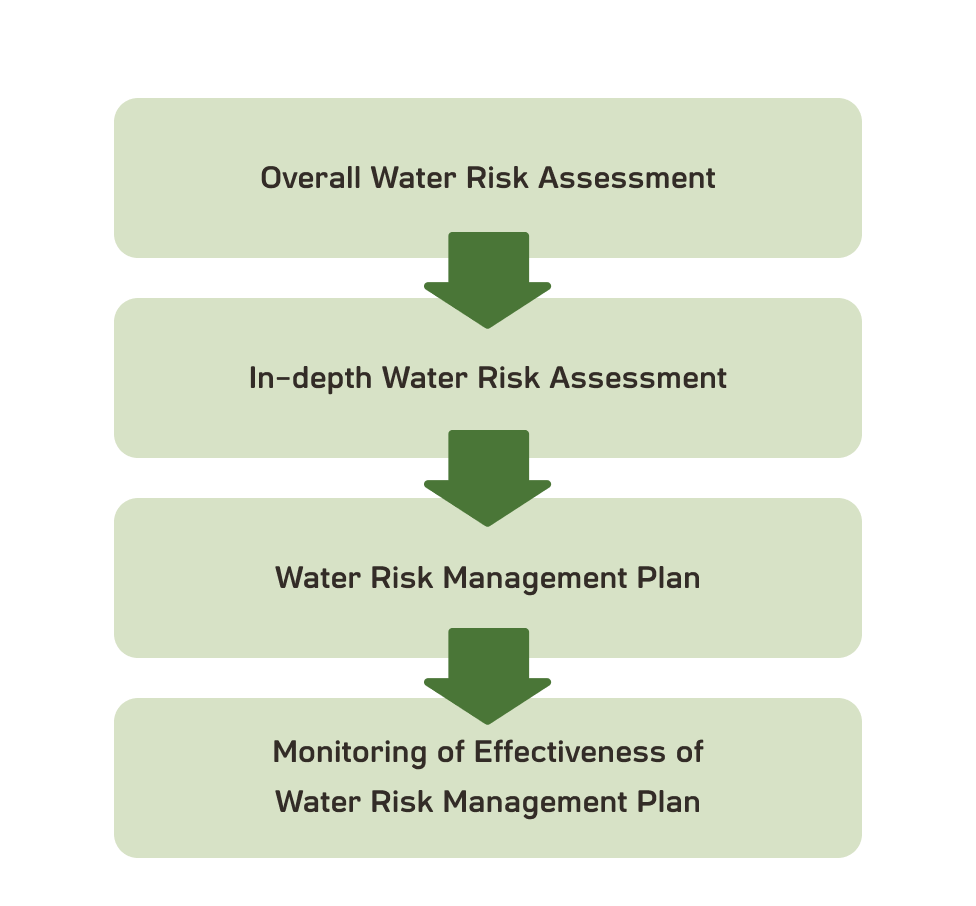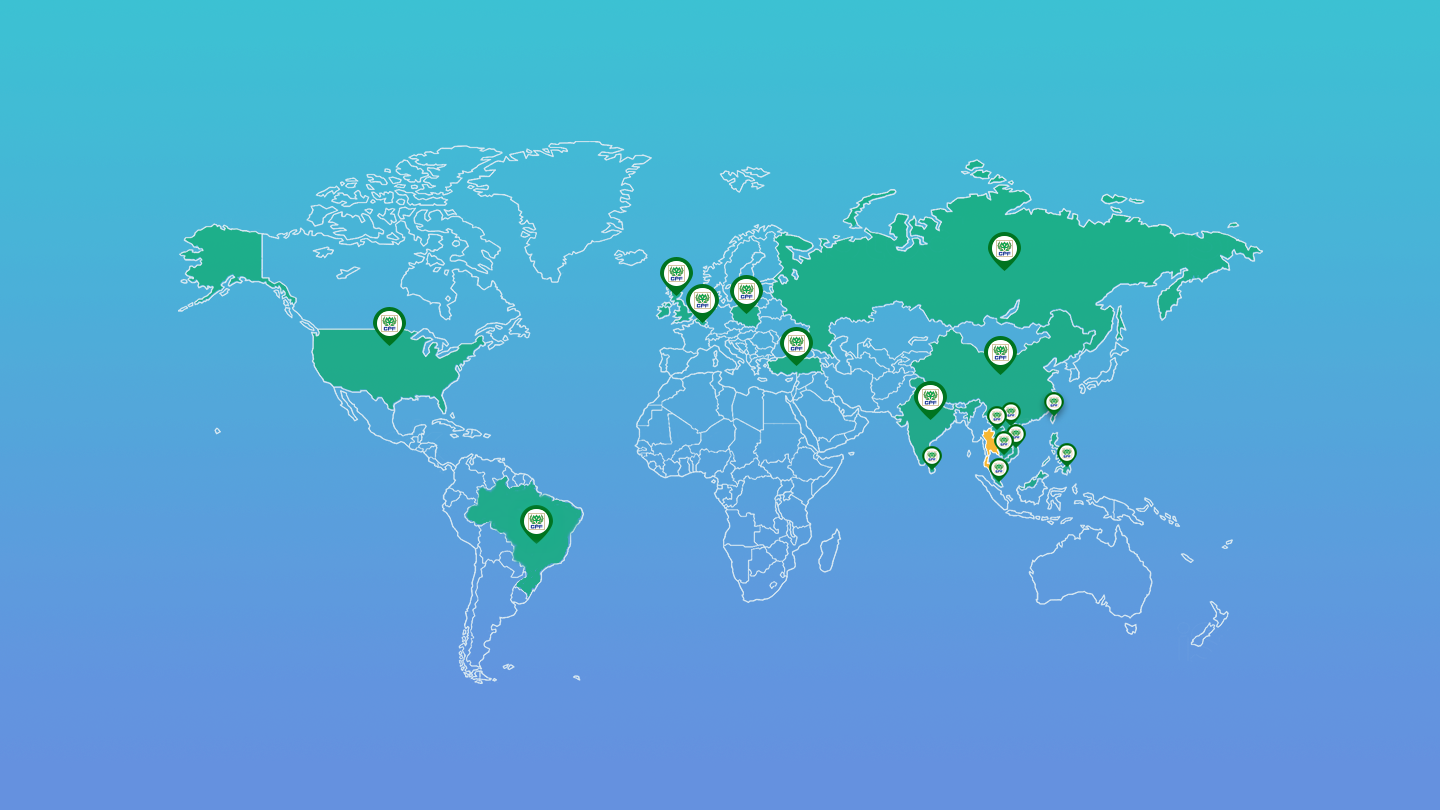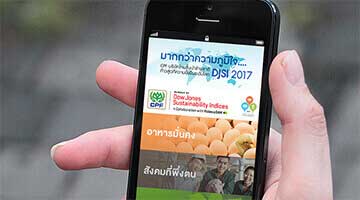As part of our normal process for business operations site selection, the Company conducts assessments of flood risks and water stress based on historical climate and water data. For existing operational sites, the Company analyzes water withdrawal data in conjunction with conducting water risk assessments using the Aqueduct Water Risk Atlas developed by the World Resources Institute (WRI) to evaluate baseline water stress across operations. This allows the Company to prioritize water management effectively. Additionally, the Company uses the results of these assessments as part of the decision-making process, to determine target areas for water management to reduce impacts on surrounding communities and to ensure compliance with local regulations.
The coverage of overall water risk assessment includes various stages in value chain from suppliers to CPF operations and customers (product use phase) as well as business partners. Geographical locations and activity types are considered in the assessment. The assessment is based on globally recognized tools such as ENCORE biodiversity module, WRI Aqueduct and WWF Water Risk Filter. Assessment of future changes are based on various socio-economic and physical climate scenarios (i.e. SSP1 RCP2.6, SSP3 RCP7.0, SSP5 RCP8.5, and MICRO A1B optimistic, medium, pessimistic).
The results highlight stages in value chain, specific supplier categories and business activities to focus on in implementing mitigation programs and provides insights for business strategy formulation and financial planning in order to promote water resiliency in business operation and value chain. For CPF operations, high-risk sites identified from the tool will undergo in-depth water risk assessment based on local context (area-based assessment) to reconfirm whether they are high-risk against these aspects.
Scenario analysis on water stress
CPF conducts scenario analysis on water stress to understand changes in water availability in the future as a result of climate change based on WRI’s Aqueduct Water Risk Atlas under climate 3 scenarios (“Optimistic”, “Business as Usual” and “Pessimistic” which are equivalent to SSP1 RCP2.6, SSP3 RCP7.0 and SSP5 RCP8.5, respectively) in 2030, 2050 and 2080. The scenario analysis result points that percentage of CPF operation sites in water stressed area is likely to remain close to baseline (± 2%) across all scenarios in all timeframes.
|
Baseline water stress |
Optimistic scenario
(SSP1 RCP2.6) |
Business as usual scenario
(SSP3 RCP7.0) |
Pessimistic scenario
(SSP5 RCP8.5) |
| 2030 |
2050 |
2080 |
2030 |
2050 |
2080 |
2030 |
2050 |
2080 |
| % Sites in water stressed area |
51% |
No change |
No change |
+1% |
+1% |
+1% |
+2% |
-1% |
+1% |
+1% |
Remark: The scope of the analysis covers operations in Thailand, Vietnam, China, as well as the Republic of China (Taiwan), the Philippines, Cambodia, Malaysia, India, Turkey, and Laos. Restaurant-type operations in Thailand are excluded.
Water Risk Management Measures
CPF considers water-related risks as part of the site selection process for all of our new operational sites, including flood and drought risks.
Furthermore, CPF has water management measures for existing operational sites with high risk such as;
- Formulation of site-specific water management plan and impact mitigation plan with top management oversight
- Adjustment of site-specific Business Continuity Plan (BCP)
- Close monitoring of internal and external water-related physical parameters
- Close monitoring of upcoming laws and regulations and change in water pricing
- Proactive analysis and preventive maintenance of water facilities
- Installation or upgrade of water treatment facilities
- Community survey and establishment of community engagement plan
- Collaboration with local stakeholders on the topics of concern
- Internal and external communication of water management measures
- Continuous improvement in water efficiency and ensure compliance with standard on water quality
Flow Diagram of Water Risk Management
Adaptation: Risks Assessment and Measures for Flood and Drought Response Amid El Nino-La Nina
In response to climate change, the livestock business (Thailand operations) has in place a process for assessing flood risks across operations, including feed factories, livestock farms, primary processing plants, and food manufacturing plants, as well as in our partner's contract farms. Historical data is analyzed to formulate short-and long-term response plans for high-risk areas, covering operational sites, inbound logistics of raw materials, and outbound logistics of goods. During emergency events, a task force is established to closely monitor flood situations and promptly respond to mitigate impacts.
For areas at risk of water stress, the Company has implemented various measures, such as improving water usage efficiency in farms and factories according to the 3Rs principle. These include reducing water usage in housing preparation, adjusting the timing of water usage for the evaporator systems to weather conditions, excavating and constructing additional open ponds to capture rainwater, drilling for groundwater sources, and increasing the frequency of leak inspections to minimize water loss. Furthermore, the Company encourages suppliers to participate in the conservation and effective management of water resources, as outlined in the Company's Sustainable Sourcing Policy and Supplier Guiding Principle.
